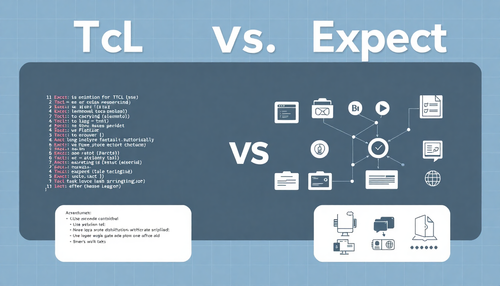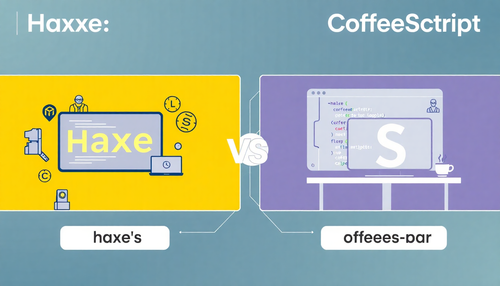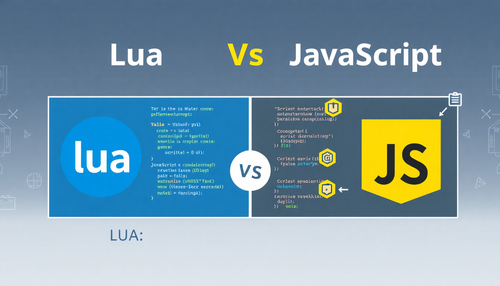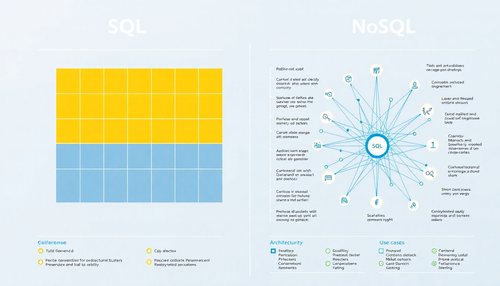Reduce your expenses with our expert guide on software outsourcing costs! Discover top strategies for saving money without sacrificing quality.

Software outsourcing has become a popular business strategy for companies looking for cost-effective and efficient solutions to their software development needs. It allows organizations to leverage the expertise of external software development teams that may be located in different countries to achieve their goals. However, for CEOs to make informed decisions about outsourcing, it is crucial to understand the associated costs.
Research by Statista shows that revenue from software development outsourcing is expected to show an annual growth rate of 8.07%, resulting in a market volume of US$587.30 billion by 2027. Furthermore, according to a study from Deloitte in 2020, around 70% of companies outsourced software development to save costs.
These statistics highlight the importance of software outsourcing costs and fees. With the global IT outsourcing market growing rapidly, it is critical that companies understand what is involved in outsourcing software development.
Here, we provide a comprehensive analysis of software development outsourcing and development costs to enable CEOs to evaluate the financial implications of their outsourcing decisions.
Types of Outsourcing Models
There are different outsourcing models to accommodate diverse business needs and objectives. These models provide flexibility in relation to resource allocation, cost management and acquisition of specialized knowledge. Understanding the different types of outsourcing models can help companies choose the most appropriate approach to meet their specific needs and drive success.
Increase in IT team
IT staff augmentation is an outsourcing model in which companies temporarily hire external IT professionals to supplement their internal teams. Rather than outsourcing an entire project or function, staffing focuses on the flexible acquisition of specific skills or knowledge. External IT professionals work alongside the company's existing staff to fill skills gaps or meet increased workloads.
Pros of increasing IT staff
- Flexible resource allocation: Companies can quickly scale up or down their IT workforce based on project requirements without the need for long-term commitments.
- Knowledge Acquisition: Access to a diverse pool of IT professionals with specialized skills and experience can bring valuable insights and knowledge to the team.
- Cost efficiency: Compared to hiring full-time employees, staff augmentation offers cost savings by avoiding onboarding and training expenses.
- Knowledge transfer: Internal teams and software developers can learn from external professionals, acquiring new skills and best practices to enhance their capabilities.
Cons of increasing IT staff
- Integration challenges: Incorporating external personnel into the company's culture and work processes can take time and effort.
- Communication and coordination: Effective collaboration between internal and augmented teams can be hampered by communication barriers, time zone differences, or coordination issues.
- Dependence on external talent: Companies can become dependent on external staff, which can present challenges if these resources are no longer available or if there is a high turnover rate.
- Potential lack of alignment: Augmented staff may not have the same loyalty or understanding of the company's long-term goals as full-time employees.
Typical cost structure for IT staff augmentation
- Hourly or daily rates: Companies pay a pre-determined rate for the hours or days worked by augmented IT professionals.
- Recruitment fees: In some cases, fees may be associated with the process of recruiting and selecting external personnel.
- Contractual Agreements: Legal and administrative costs to establish and manage contracts with increased staff.
- Travel and Accommodation: Additional expenses may arise if the increased team needs to travel to the company location to work on site.
It's important to note that the specific cost structure may vary depending on other factors, such as the location of the augmented team, their skill level, and the length of the contract.
Dedicated Teams
Dedicated team outsourcing is an outsourcing model where a company hires a dedicated team of professionals from an external service provider to work exclusively on its projects. Unlike other outsourcing models, where resources are shared among multiple clients, dedicated teams focus exclusively on meeting the needs of a single client. The external team functions as an extension of the client's internal team, collaborating closely to achieve project objectives.
Pros of Dedicated Teams
- Commitment and Focus: Dedicated teams fully committed to client projects, ensuring high focus and attention to detail.
- Seamless integration: The external team becomes an integral part of the client's organization, working within its culture, processes and objectives.
- Retained Knowledge: As the dedicated team works exclusively for the client, they gain in-depth knowledge of the client's domain and systems, improving efficiency and productivity.
- Scalability and flexibility: Dedicated teams can easily scale up or down based on project requirements, offering flexibility and adaptability.
Cons of Dedicated Teams
- Higher Cost: Compared to other outsourcing models, dedicated teams tend to have higher costs due to the unique nature of the work and the need to retain a full team.
- Management overhead: The client needs to allocate resources and time to effectively manage the dedicated team, including communication, coordination, and performance monitoring.
- Dependency on external staff: While dedicated teams offer benefits, reliance on an external team can lead to potential challenges if there are issues with the team's performance, availability, or stability.
- Initial onboarding period: There may be a learning curve and initial adjustment period required for the dedicated team to fully understand the client's processes and systems.
Typical cost structure for dedicated teams
The cost structure for dedicated teams typically includes the following elements:
- Team Composition: The cost is based on the required number of dedicated team members, their skill levels and experience.
- Monthly Retainer: Clients often pay a fixed monthly fee to retain dedicated staff, covering salaries, benefits and administrative costs.
- Infrastructure and Tools: Additional expenses may include providing hardware, software licenses, and development tools required for dedicated staff.
- Management and Communication: Costs associated with project management, coordination and ongoing communication with the dedicated team.
- Performance incentives: In some cases, clients may provide performance-based incentives to motivate dedicated staff and ensure high-quality results.
It's important to note that the cost structure can vary depending on factors such as the location of the project manager or dedicated team, the complexity of the projects, and the duration of involvement.
Outsourced development services
Outsourced development services refer to the practice of hiring external service providers to handle the entire cost of software development and the life cycle of a software project. In this model, companies delegate the entire development process, including analysis, design, coding, testing and deployment, to a specialized outsourced partner. The external team assumes responsibility for delivering the final product, while the client maintains oversight and control of the project.
Pros of Outsourced Development Services
- Knowledge and expertise: Outsourcing development services allows you to access specialized skills and knowledge that may not be available in-house, ensuring high-quality development.
- Cost efficiency: Outsourcing can often provide cost savings by reducing overhead expenses associated with maintaining an in-house development team, such as salaries, benefits, infrastructure, and training.
- Faster time to market: Dedicated development teams can focus exclusively on the project, resulting in faster development cycles and faster time to market.
- Scalability and flexibility: Outsourcing allows companies to increase or decrease their development resources based on project requirements, providing flexibility and cost control.
Cons of Outsourced Development Services
- Communication and coordination challenges: Effective communication and coordination can be challenging due to geographic and cultural differences, which can lead to delays and misinterpretation of requirements.
- Loss of direct control: Entrusting the development process to an external team means giving up direct control over certain aspects of the project, requiring a high level of trust and effective project management.
- Potential quality and security risks: Quality control and data security can be a concern when working with an external team, necessitating appropriate contractual arrangements and close oversight.
- Dependency on External Staff: Companies can become dependent on outsourced development staff for ongoing maintenance and support, which can present challenges if the partnership is disrupted or terminated.
Typical cost structure for outsourced development services
The cost structure for outsourced development services typically includes the following elements:
- Project scope and complexity: The size, complexity, and duration of the project influence the overall cost. Larger, more complex projects generally incur higher costs.
- Development Team Composition: The cost is based on the number and experience of the outsourced development team members involved in the project.
- Hourly or Fixed Rates: Pricing models can be based on hourly rates for time spent on the project or fixed rates for the entire project, depending on the agreement between the client and the outsourcing provider.
- Additional Expenses: Other costs may include infrastructure, software licenses, development tools, and any third-party services or technologies required for the project.
It is important to note that the total cost to outsource software and structure can vary depending on factors such as the location of the outsourcing provider, the complexity of the project, and the level of customization required.
Factors Influencing Software Development Outsourcing Costs
Several factors play a significant role in determining the costs associated with development outsourcing. Understanding these factors is crucial for companies to make informed decisions, establish realistic budgets and effectively manage their outsourcing projects. In this section, we will explore the main factors that influence development outsourcing costs, including geographic location, project complexity, technology stack and expertise, as well as communication and collaboration aspects.
Geographic location
The geographic location of the outsourcing provider has a direct impact on the cost of outsourcing. Different regions, such as Eastern Europe, Asia and Latin America, have varying cost structures due to factors such as labor costs, infrastructure availability, taxes and economic conditions. For example, Latin American countries may offer a higher level of expertise at a moderate cost, while Asian countries often offer cost advantages but may have cultural and linguistic differences to consider.
Project Complexity and Scope
The complexity and scope of a software project significantly influence outsourcing costs. Projects with complex requirements, advanced features or tight deadlines may require specialized skills and more extensive resources, resulting in higher costs. Additionally, project duration plays an important role, as long-term commitments may require ongoing allocation of resources and may incur additional expenses such as maintenance and support.
Technology and experience stack
The technology stack required for the software development project impacts outsourcing costs. Projects utilizing cutting-edge technologies or requiring expertise in niche domains may require higher fees due to a shortage of qualified professionals in these areas. The complexity of the chosen technology stack, including integration challenges and scalability requirements, can also affect the software developer's own costs.
Communication and Collaboration
Effective communication and collaboration are vital to successful software development outsourcing. Clear, comprehensive design requirements and specifications minimize misunderstandings and rework, thereby controlling costs. Time zone differences between the client and the outsourced company or team may require additional coordination efforts, potentially impacting project deadlines and costs. Using project management tools and collaboration platforms can help streamline communication and control costs by facilitating real-time collaboration and task tracking.
Offshore Software Development Fees by Country
When considering offshore outsourcing, it is important to understand software development rates in different regions. This section provides an overview of offshore fees for software development in various countries, including Western Europe, Eastern Europe, Central/West Asia, East and South Asia, North America, and South America. Additionally, we explore the pros and the cons of outsourcing for each region.
Offshore fees for software development in Western Europe
Western European countries have higher software development rates than the rest of the world. Software development rates tend to be higher per hour in countries with a more developed IT industry and higher cost of living. The countries are Germany, United Kingdom and France. Depending on the area and specifics of the job, rates in Western Europe can range between $150 and $300 per hour.
Software development outsourcing rates in Eastern Europe
Eastern Europe is a popular destination for offshore software development due to its competitive rates and highly skilled workforce. Countries such as Ukraine, Poland and Romania offer attractive rates while maintaining high expertise. Average rates for software development in Eastern Europe range from $25 to $50 per hour.
Outsourcing to Eastern Europe: Pros and Cons
Pros
- Cost-effective: Eastern Europe offers competitive rates, making it a cost-effective choice for outsourcing software development projects.
- Skilled workforce: The region has a rich talent pool with strong technical skills, especially in programming and engineering.
- Cultural Affinity: Eastern European countries often have cultural similarities with Western European clients, facilitating stronger communication and collaboration.
Cons
- Time zone differences: Depending on location, time zone differences may exist between Eastern Europe and Western countries, requiring careful coordination for effective communication.
- Language barriers: Although many professionals in Eastern Europe are proficient in English, language barriers can still pose challenges in certain situations.
- Scalability: While Eastern Europe offers a skilled workforce, scalability and resource availability may vary depending on country and demand.
Software development outsourcing rates in Central Asia/West Asia
Central Asia and West Asia, including countries like India, Pakistan and Kazakhstan, are known for their competitive software development rates. Average rates in these regions can range from $15 to $40 per hour. This depends on the country and the complexity of the project.
Outsourcing to Central/West Asia: Pros and Cons
Pros
- Cost-effective rates: Countries in Central and Western Asia offer highly competitive rates, making them attractive for cost-sensitive projects.
- Time Zone Advantages: Central and Western Asia often have overlapping work schedules with European and American clients, facilitating real-time communication.
Cons
- Cultural Differences: Cultural differences and communication styles may require additional efforts to ensure effective communication and understanding between the outsourcing team and the client.
- Quality and Standards: These low rates can impact quality, and adherence to international standards can vary between suppliers.
- Language proficiency: English proficiency levels can vary between individuals, and language barriers can sometimes pose challenges in effective communication and collaboration.
Software development rates in East and South Asia
East and South Asia, including countries like China, the Philippines, and Vietnam, offer competitive rates for software development. Average rates in these regions range from $15 to $40 per hour, depending on the country and complexity of the project.
Outsourcing to East and South Asia: Pros and Cons
Pros
- Cost-effective: East and South Asia offer cost advantages, making them attractive to companies looking for affordable software development services.
- Qualified workforce: The region has a large pool of IT professionals, offering diverse technical skills and knowledge in various technologies.
- Specialization: Certain countries in East and South Asia, such as India, have developed specialized expertise in specific domains, such as software testing or mobile application development.
Cons
- Cultural Differences: Cultural differences and communication styles may require extra effort to bridge the gap between the outsourcing team and the client.
- Time zone challenges: Time zone differences between East and South Asia and Western countries can impact real-time collaboration and communication.
- Quality Control: Ensuring consistent quality standards between different suppliers in the region may require due diligence and appropriate quality control measures.
Software Development Hourly Rate in North America
North America includes the United States and Canada. They generally have higher software development rates than other regions. Average rates in North America can range from $80 to $200 per hour, depending on the expertise required and the complexity of the project.
Outsourcing to North America: Pros and Cons
Pros
- Technical Excellence: North America is known for its advanced technological capabilities and qualified professionals, ensuring high-quality results.
- Cultural Compatibility: Working with North American teams generally provides a greater degree of cultural compatibility and ease of communication for clients from Western countries.
- Intellectual Property Protection: These countries have robust legal frameworks for intellectual property rights, providing an additional layer of security.
Cons
- Higher cost: Outsourcing to North America can be more expensive due to higher labor costs, which can impact the overall project budget.
- Availability and scalability: Resource availability may be limited and scaling up or down staffing may be more challenging compared to regions with larger talent pools.
- Time zone challenges: Time zone differences between North America and other regions can require careful coordination for efficient communication and collaboration.
Offshore Development Fees in Latin America
Latin America includes countries such as Brazil, Argentina and Colombia. These countries offer competitive software development rates with a growing pool of qualified professionals. Average software development outsourcing rates in South America can range from $25 to $60 per hour depending on the country and project requirements.
Outsourcing to Latin America: pros and cons
Pros
- Competitive Rates: South America offers competitive rates and at the same time a high level of technical knowledge.
- Cultural Compatibility: Latin American suppliers often have cultural similarities with North American customers, facilitating collaboration and communication.
- Time zone proximity: Latin American countries have overlapping work schedules with North American clients, allowing for real-time communication and coordination.
Cons
- Limited Scalability: Depending on the specific location, scalability of resources and availability of qualified professionals may vary.
- Language proficiency: Although English proficiency is generally good, language barriers may exist in certain situations, requiring effective communication strategies.
- Infrastructure and connectivity: Some regions in Latin America may face infrastructure and connectivity challenges, which can affect the speed and efficiency of communication and project execution.
Comparison of onshore and offshore software development costs
Comparing the costs of onshore and offshore software development is crucial for companies exploring outsourcing options. Although offshore development is often associated with cost savings, it is essential to understand the factors that contribute to these differences and compare them to the potential benefits and challenges.
Here are the key points to consider when comparing onshore and offshore software development costs:
- Labor costs: One of the main reasons companies opt for offshore development is the potential for lower labor costs. Offshore destinations such as Eastern Europe, Asia and Latin America often offer more affordable fares compared to onshore options such as North America or Western Europe. It's essential to understand the differences in labor costs and how they align with your budget.
- Overhead: Onshore software development may involve higher overhead expenses due to factors such as office space rental, infrastructure costs, and labor regulations. On the other hand, offshore development can provide cost savings by leveraging lower overheads in certain regions.
- Quality and experience: While cost reduction is a significant consideration, it is important not to compromise on quality and experience. Onshore development can offer advantages in terms of access to highly qualified professionals, specialized knowledge and established development practices. Offshore development destinations, however, have made significant advances in their technical capabilities, allowing companies to access the best talent and expertise at more competitive prices.
- Cultural and Communication Factors: Cultural alignment and effective communication play a crucial role in project success. Onshore development can offer advantages in terms of cultural proximity, shared business practices and ease of communication due to language and time zone similarities. Offshore development could potentially introduce cultural and communication challenges, but these can be mitigated through appropriate project management and collaboration tools.
- Legal and intellectual property considerations: It is essential to understand the legal frameworks and measures for protecting intellectual property in onshore and offshore locations. Onshore development can provide greater confidence and assurance in terms of legal compliance and intellectual property protection, but reputable offshore providers can also offer robust measures to protect your assets.
- Time and project management: Time to market and project management efficiency are critical considerations. Onshore development can offer advantages in terms of real-time collaboration, reduced travel costs and faster response times. Offshore development, however, can take advantage of time zone differences to enable uninterrupted development cycles, potentially speeding up project deadlines.
Strategies to optimize development outsourcing costs
Optimizing development outsourcing costs is crucial for companies looking to maximize the value and return on investment from their outsourcing initiatives. By implementing effective strategies, companies can control expenses and foster successful collaborations with third-party vendors. This section explores key strategies for optimizing software costs, including thorough vendor assessment, clear project scope, and regular communication and monitoring.
Complete supplier assessment
Evaluating potential outsourcing providers is essential to finding the right option for your project and budget. Assessing suppliers’ technical knowledge ensures they have the skills and experience needed to handle your project efficiently. It is important to assess your communication and collaboration capabilities to ensure effective coordination throughout the outsourcing work. Checking suppliers' records and references provides insights into their reliability, deliverability and customer satisfaction.
Clear and detailed project scope
Having a well-defined project scope is crucial to controlling outsourcing costs. A clear scope helps the supplier understand your requirements accurately, minimizing rework and scope creep that can inflate costs. Detailed project documentation, including specifications, user stories, and wireframes, provides a shared understanding of project objectives and outcomes. Setting realistic deadlines and milestones allows for proper allocation of resources and avoids rush charges or unnecessary delays.
Regular Communication and Monitoring
Maintaining regular communication with the outsourcing team is vital for cost optimization. It allows for timely feedback, problem resolution, and alignment with project progress. Regular progress reports and meetings allow transparent monitoring of milestones, identifying any deviations early. By promptly addressing concerns and problems, risks and delays can be mitigated, avoiding potential cost overruns and rework.
Conclusion
Optimizing software development outsourcing costs requires a strategic approach and careful consideration of several factors.
Thorough vendor assessment ensures the selection of a capable and reliable outsourcing partner. A clear, detailed project scope helps minimize rework and scope creep. Regular communication and monitoring facilitate efficient project management and problem resolution.
By implementing these strategies, companies can optimize their outsourcing costs, improve project outcomes, and achieve successful software development collaborations. CEOs must recognize the importance of understanding software development costs and making informed decisions to select the right outsourcing model and vendor, ultimately driving business growth and success.
If you liked this article, be sure to check out some more articles about outsourcing.
- Nearshore vs Offshore Outsourcing: Which is Best for Your Business?
- Leveraging the benefits of a multisourcing strategy in software outsourcing
- Key metrics to measure success in software outsourcing
- The ultimate guide to outsourcing IT projects
Common questions
What are the main factors that influence development outsourcing costs?
Several key factors influence software development outsourcing costs. First, the geographic location of subcontracting services plays a significant role because different regions and countries have varying labor costs, infrastructure expenses, and tax regulations. For example, outsourcing to Eastern Europe or Asia often offers lower labor costs than North America or Western Europe. Second, the complexity and scope of the project affect costs.
Projects with complex requirements, extensive functionality or specialized technologies tend to be more expensive, as they require greater knowledge and resources. Third, the technology stack chosen for the project and the level of expertise required impact outsourcing costs. The use of cutting-edge or niche technologies may require specialized skills, thus affecting the overall cost. Language barriers, cultural differences and time zone variations can affect efficiency and cost-effectiveness. Employing efficient project management tools and practices can help mitigate these challenges.
How can CEOs optimize software outsourcing costs without compromising quality?
CEOs can optimize software development outsourcing costs without compromising quality. First, thoroughly evaluate potential outsourcing providers, assessing their technical knowledge, experience and track record. Asking for client references and testimonials can provide insights into your reliability and quality of work. Second, provide a clear and detailed project scope to minimize misunderstandings and scope creep.
Clearly defining requirements, timelines, and quality expectations helps with efficient resource allocation and reduces the need for rework. Finally, establish regular communication channels and monitoring mechanisms with the outsourcing team. Scheduling frequent progress updates, holding regular meetings, and maintaining transparency helps you identify and resolve issues promptly, minimizing their impact on project deadlines and costs.
What are the pros and cons of different software development outsourcing models?
Increasing your IT staff offers flexibility and control, but can be more costly and require more management effort. Dedicated teams provide a more comprehensive solution, but may have less flexibility and higher costs. Outsourced development services can offer cost savings and expertise, but can have less control and potential communication challenges.
Source: BairesDev




















































